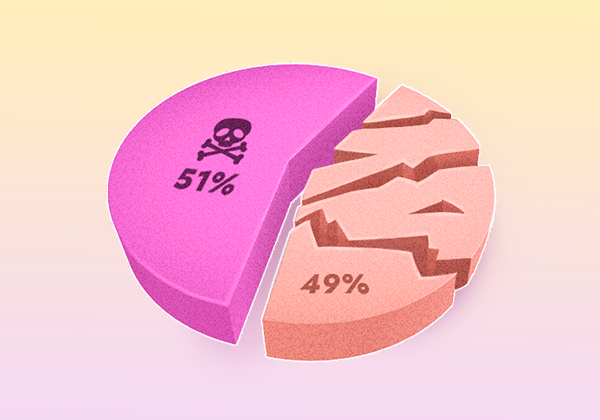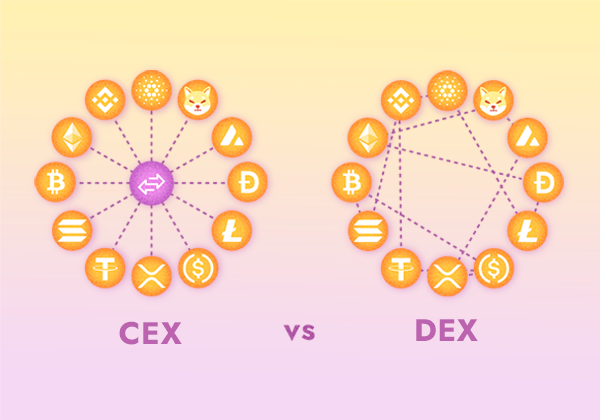
What is Web3, and How is It Better Than Web2?
Over the years, the Web has experienced multiple changes. Its development history can be divided into two main phases: Web1 and Web2. However, the Internet's growth history didn't stop at two phases and is rapidly moving to a new milestone – Web3. What is it and how does it work? Let's have a look at the rivalry "Web2 vs. Web3" a bit closer and explore how Web3 technology is different from Web2.
What is Web1?
The Internet's original version is referred to as Web1, or Web 1.0. It consisted of just static HTML pages – an outdated language for formatting – that presented data online. The architecture used by Web1 was completely decentralized, allowing any user to host servers, develop apps, and publish content on the Internet without restriction. Web1 users could utilize web browsers to search for information on the network.
Back then, people were only allowed to engage with one another through basic chats and forums – they weren't given the chance to exchange information or interact in the ways that are available to us nowadays. As a result, users primarily interacted with Web1 as observers, rather than as participants.
What is Web2?
The modern Internet, in contrast to Web1, is centralized, focused on content generation, and mostly monopolized by big technology organizations.
Due to the creation of databases, server data processing, forums, and social networks in the late 1990s, the Internet became more interactive and was given the name Web2 (or Web 2.0). As the Internet exists nowadays, it offers a variety of chances for content development. On Web2, every novice creator can freely express their talent through writing, photography, and blogging.
On websites like WordPress and Tumblr, content creators post their works, and regular people from all over the world are free to participate and communicate in a variety of ways on social media sites like Facebook and Twitter. In addition, anyone can effortlessly consume information thanks to mobile Internet access and smartphone distribution.
The Internet revolution was advantageous for businesses looking to make the transition to Web2 since it allowed them to amass enormous user databases in addition to earnings. Various technology giants acquire smaller businesses, building a central worldwide network of customers and gathering data.
Web2 Disadvantages
Since the introduction of Web2, major Internet corporations have learned how to leverage user data to get users into and keep them within their ecosystems. Businesses encourage customers to use their services by offering customized advertising or limiting communication between different platforms.
Over several recent years, there have been numerous examples of unjust data control, where user accounts were canceled because they unintentionally broke the rules of the platform community. In this regard, the question of combining the advantages of Web1 (decentralization) and Web2 (user participation) in a new phase of the Internet – Web3 – has become relevant.
What is Web3?
Web3 is the next stage of the Internet's evolution, especially in light of Web2's current issues. With Peer-to-Peer (P2P) technologies, blockchain, virtual reality (VR), the Internet of Things (IoT), and open-source software, as well as decentralization, Web3 users will have complete control and ownership over their content.
Web3 Features
What are Web3 features? Now, let's have a look at the difference between Web 2.0 and Web 3.0 to get a full understanding of why the last version is better than the previous one:
- Decentralization. Given that the new Internet is intended to address the centralization-related issues of Web2, decentralization will be essential to Web3's success. In addition to providing users with control over their data, companies will have to pay for access to user information. By eliminating the need for costly middlemen in the current Web2 payment infrastructure, decentralization will make native crypto payments accessible to all users.
- Public Accessibility. In the past, major corporations oversaw user engagement and had the power to forbid cross-platform communication. Nevertheless, with Web3, users will be allowed to communicate openly.
- Trustless System. Web3 network users won't need to have any faith in anyone besides the network itself thanks to the trustless technology.
All of this will be supported by blockchain technology and cryptocurrency.
► Sabai Academy — a place where studying blockchain, crypto, fractional ownership, and real estate investments becomes a catalyst for capital growth!
Sabai Academy
BOOST your knowledge with our FREE crypto courses!
Related Articles

Understanding the 51% Attack: Threats and Implications for Blockchain Infrastructure Protection

